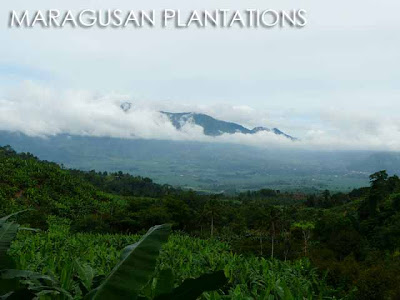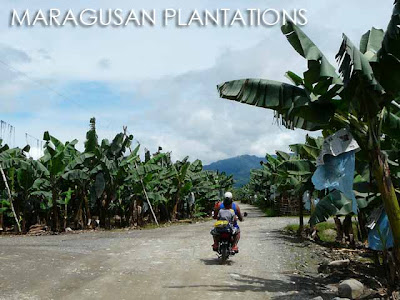
Gold had attracted me to
Compostela Valley. Gold mining is actually a major industry of Compostela Valley. And
Mt. Diwalwal is its most popular gold-rush site, especially after the film
I Come with the Rain starring Josh Hartnett was shot there. But the gold I'm talking about is the natural beauty of the province.
Traveling by bus around Mindanao is quite orderly and easy because there are centralized bus terminals in each town, not like Metro Manila's chaotic system where each company has its own bus terminal.

From Mati, I took a bus to the Tagum Terminal. Then from there, I boarded a Butuan-bound bus which had several stops in Compostela Valley and Agusan del Sur. I got off at Nabunturan, the provincial capital, since I had an appointment at the tourism office. After making arrangements for Maragusan, I went back to the Nabunturan Terminal to catch a bus to Maragusan. Mati to Tagum was 3 hours, Tagum to Nabunturan was 1 hour, and Nabunturan to Maragusan was another 2 hours.
Later I would find out that there is actually a jeepney route directly-linking Mati to Maragusan. It was dark already when I arrived in Maragusan. So after dinner, I called it a night.
The next day, I went around Maragusan's attractions with the help of a guide arranged through the local tourism office. We also hired a
habal-habal to take us to the different destinations since they were very far from each other.

My first stop for the day required some trekking. In the forests of Maragusan are pockets of
Rafflesia clusters. We visited the one in Purok Malinawon, Barangay Mapawa. It was a moderate 15-minute trek up to where the
Rafflesia mira buds could be found. Unfortunately, none of the flowers were in bloom.
The only time I got to see a
Rafflesia in full bloom was during a visit to the Bogor Botanical Garden in Indonesia. They rarely flower so seeing one in bloom is reason enough to consider yourself lucky. The hike also afforded me some nice views of the banana plantations that dominate the Maragusan landscape.

From the Rafflesias, we proceeded to Barangay New Albay to check out
Marangig Falls. Again, this one required some trekking too. Not bad since I like waterfalls. But I've seen more majestic ones.

The next waterfall seemed like it was on the opposite end of town. We motored to Barangay Coronobe to check out
Tagbibinta Falls. This was the larger falls and thank God the trekking was minimal. It's actually very popular to locals and facilities have been built in the area for rest and recreation.

Although Maragusan is all about bananas, none of the bananas actually reach the local market since they all go to Dole. After having visited Kalsangi several years ago, I wanted to check out the processing facility to see how things are done. But unfortunately, visitors need prior permission to gain access. What I didn't like about the whole thing though was their security (the ones on motorcycles) were very rude.
After lunch, I took a bus back to Nabunturan where I was to stay for the night.























